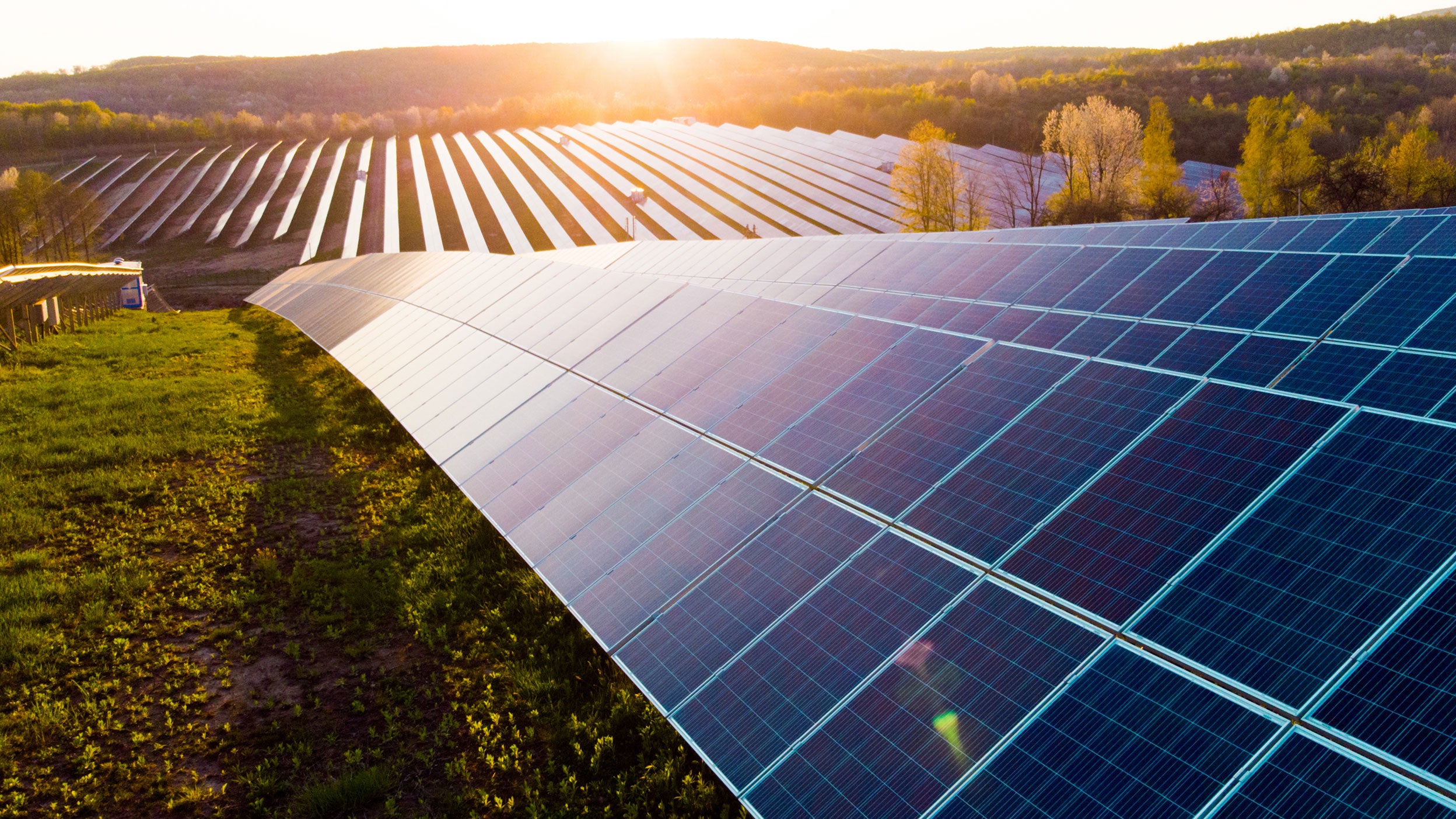Will solar take the throne?

Renewable energy developed only incrementally over the previous two decades. However, that may now change completely as major global economies commit to becoming net zero carbon economies in an attempt to curb rising global temperatures. In this paper, we explore the specific catalysts supporting renewable energy and the viability of various sources, including whether solar could become the “king of electricity” in the years ahead.
Government commitment
Following the Paris Agreement, most major nations – particularly the largest economies of the US, China, the EU and the UK – have committed to net zero carbon emissions by 2050 (2060 for China). Each country or economic bloc is developing its own plans for achieving the goal individually, but the common feature is that they will all require transformation of many industries as well as substantial investment. The energy sector is where the greatest challenges and opportunities exist.
Economic improvement
The costs involved with producing energy from both solar and wind have reduced considerably in the past decade and are now among the cheapest sources of electricity. This is in stark contrast to the past, when large government subsidies were needed to make solar and wind worth considering as an alternative to fossil fuels. Financial assistance is no longer needed with solar energy soon set to become the lowest-cost source of electricity in history. Cost reductions have been driven by technological gains, a trend that is predicted to continue.
Figure 1 - Key clean technologies ramp up by 2030 in the net zero pathway
| Solar and wind | Capacity additions set to grow x4 between 2020 and 2030 |
|---|---|
| Electric car sales |
Set to increase from around 3.5 million in 2020 to over 55 million by 2030 |
| Energy intensity of GDP | Set to reduce 4% per year between 2020 and 2030 |
GDP = gross domestic product in purchasing power parity. Source: IEA, Net Zero by 2050 report, May 2021.
What are the tailwinds for the solar energy sector globally?
Renewable energy is booming. According to the International Energy Agency (IEA), in 2020, annual renewable capacity additions increased 45% to almost 280 GW – the highest year-on-year increase since 1999. This growth is set to continue, with the IEA forecasting that exceptionally high capacity additions will become the “new normal” in 2021 and 2022, with renewables accounting for 90% of new power capacity expansion globally. Solar PV, in particular, is expected to continue to break records, with annual additional capacity reaching 162 GW by 2022, almost 50% higher than pre pandemic levels.
Read our full white paper (English only) for more about government support for solar across the world, why solar economics are improving, and which solar investments are likely to be made.
Risk Warnings
-
The value of investments and any income will fluctuate (this may partly be the result of exchange rate fluctuations) and investors may not get back the full amount invested.
Important Information
-
This marketing communication is for use in Austria, Belgium, Dubai, Denmark, Finland, France, Germany, Greece, Isle of Man, Italy, Ireland, Jersey, Guernsey, Luxembourg, Netherlands, Norway, Portugal, Spain, Sweden, Switzerland by Professional Investors, and by Qualified Clients/Sophisticated Investors in Israel. Investors should refer to the legal documents prior to investing. By accepting this document, you consent to communicating with us in English, unless you inform us otherwise. This document should not be considered financial advice. Persons interested in acquiring the product should inform themselves as to (i) the legal requirements in the countries of their nationality, residence, ordinary residence or domicile; (ii) any foreign exchange controls and (iii) any relevant tax consequences. Any calculations and charts set out herein are indicative only, make certain assumptions and no guarantee is given that future performance or results will reflect the information herein. For details on fees and other charges, please consult the prospectus, the KIID and the supplement of each product. Where individuals or the business have expressed opinions, they are based on current market conditions, they may differ from those of other investment professionals and are subject to change without notice. This document has been communicated by Invesco Investment Management Limited, Central Quay, Riverside IV, Sir John Rogerson’s Quay, Dublin 2, Ireland.
Invesco Asset Management Limited, Perpetual Park, Perpetual Park Drive, Henley-on-Thames, Oxfordshire, RG9 1HH, United Kingdom; and Invesco Asset Management (Schweiz) AG, Talacker 34, 8001 Zurich, Switzerland.


